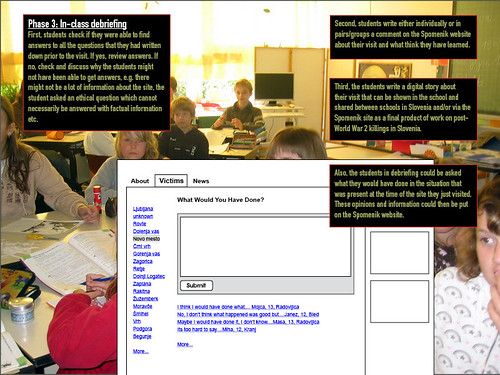Join Us Later at 11:00 For More
So in a couple of short hours, or probably less, last week I’ve managed to get my work that I’m doing for the Spomenik project on no less than ten Slovenian news outlets, thanks in large part to the brave and media-savvy work of our partners at the Study Centre for National Reconciliation.
I’ve never been on the news and considering that there were a load of people in the room at the commission for the 2nd Anniversary of the Opening of the Huda Jama Mass Grave (in Slovenian but Google Translate does okay for English) have been quite a bit, it was a weird experience. Granted, as of yet, I haven’t managed to kick up as much dust as Jože Dežman or anything, but I think that there might be something to this media thing.
Quick breakdown of the situation: Slovenia became independent from Yugoslavia in 1991 at which point most of the former Communist Party decided to rebrand as Social Democrats. They still more or less run things in a lot of scary ways like back in the day and don’t like people like us making light of the crimes of their predecessors.
To keep in line with the uncannily recurring theme of ‘realness’ (without any direct reference to Mob Deep mind you) however a pain in the ass things like this might be, you have to get in touch with the world somehow, and no matter what anybody tells you Twitter, Facebook, etc. aren’t the way to get to a lot of real people. Things as unsexy as broadcast television and radio are.
The thing that keeps on creeping up with my work on this massive beast of a project is that a lot of it is about being real. Whether ditching all the iPhone malarkey and sticking with just regular phones or being on the news in a country that SXSW or Facebook probably don’t care about, we’re trying to design for real people with real problems. On top of that, most of our demographic is literally quickly dying off.
The thing is, is that the best thing we could do is make a big documentary and get it on TV and have kids watch it in schools. This however isn’t really our brief with the project as it is supposed to be a pervasive monument and be on technology that is ‘everywhere’ including out in the woods where these mass graves are. So the realness comes into play I imagine into how exactly you chuck this technology at people. You make it simple and you try to make it relevant, and you try to make it partially for kids who’s history book has the big massive hole in it and taking them out in the woods and asking them difficult questions in the classroom and also partially teach them that life is very real, often times very cruel and very messy, but the best way to deal with reality is head on.

If you’re among the few and exclusive who aren’t related to me, follow this site and can read Slovenian, here’s some links:
“Danes mineva dve leti od vstopa v Hudo Jamo”
“Štrovs: V Sloveniji od 600 prikritih grobišč ni niti eno urejeno kot vojno pokopališče žrtev komunizma”
“Mednarodni simpozij: “Huda Jama je primer genocida iz leta 1945”
“Dežman o Hudi Jami: Ne bo več mogoče tiščati glave v pesek”
“Dežman: Huda jama – obup titofilnega dela slovenske družbe”
“Odgovorni hočejo zločine pomesti pod preprogo”
“Huda jama je primer genocida iz leta 1945”
